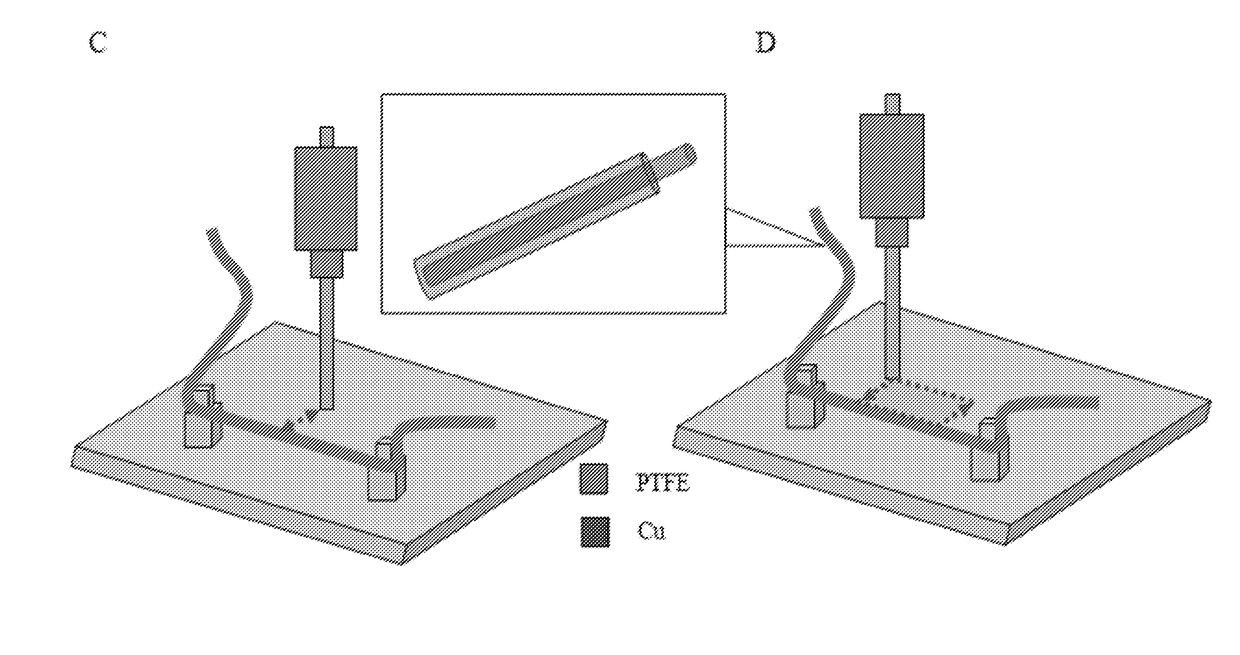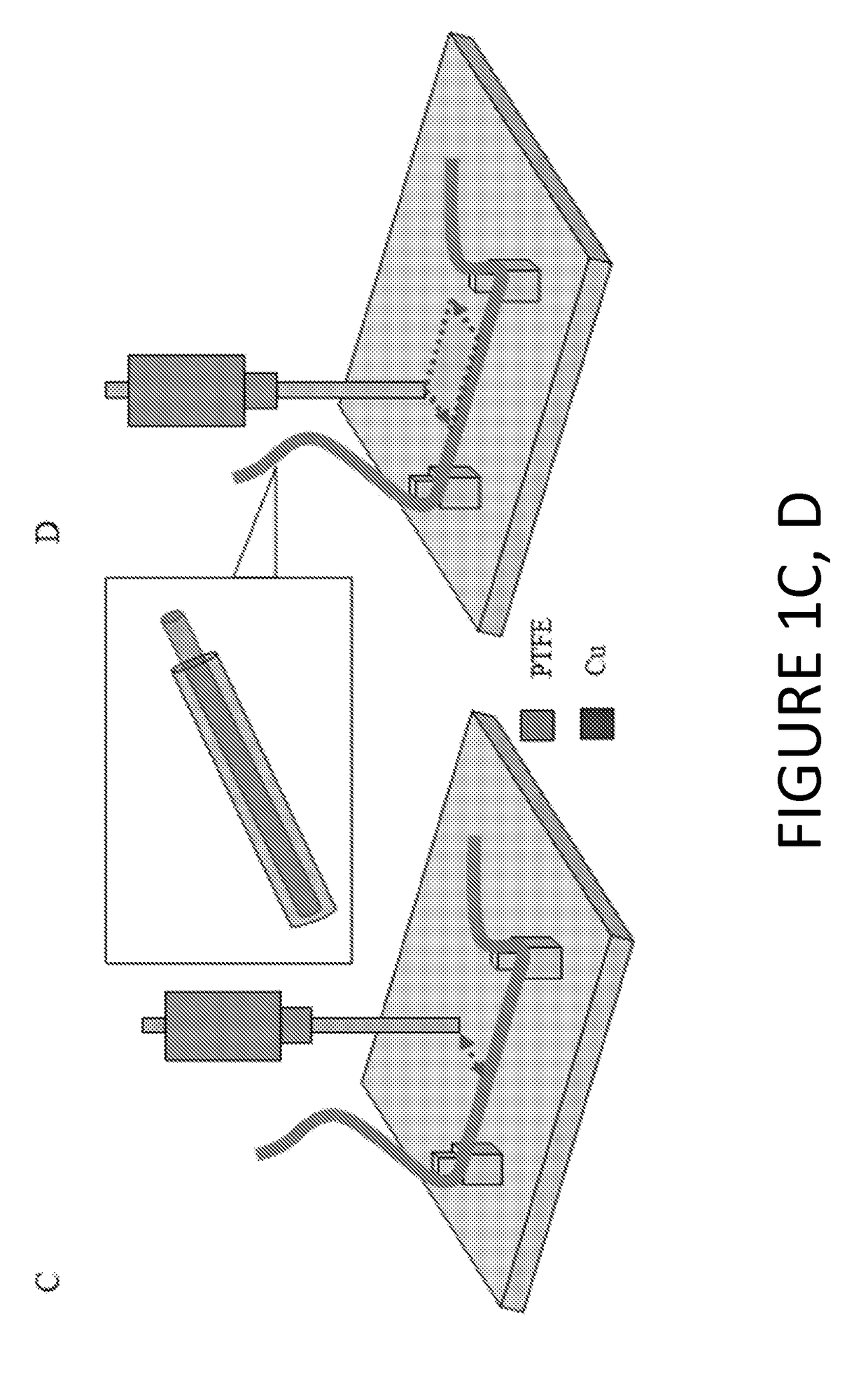Thread Shaped Contact Electrification Fiber
a fiber and contact technology, applied in textiles, protective garments, textiles and papermaking, etc., can solve the problems of low piezoelectric power, unsuitable wearable electronics, and frequent recharging,
- Summary
- Abstract
- Description
- Claims
- Application Information
AI Technical Summary
Benefits of technology
Problems solved by technology
Method used
Image
Examples
example 1
re
[0056]As illustrated in FIG. 1, a representative contact electrification fiber consists of a fine copper line (130 μm) coated with a very thin layer (10 μm) of polytetrafluoroethylene (PTFE). FIG. 1a shows a SEM image of the contact electrification fiber (i.e., a copper wire of diameter of 130 μm wrapped with PTFE nanoparticles). The diameter of the PTFE-coated wire is about 150 μm as shown. Copper was selected because of its high conductivity, mechanical strength, and cost efficiency. Using copper as a core of the fiber also allows high temperature treatment of the PTFE coating layer. The heating process helps PTFE particles bond more strongly to each other, which significantly reduces the possibility of them detaching from the final product in use. PTFE was selected as the contact electrification material because it is one of the most negative contact electrification materials. With a solution of 60% dispersion PTFE in water, a thin layer of PTFE was coated on fine copper wires ...
example 2
reads
[0063]Among the fabrics used for textile and apparel manufacturing, cotton (natural cellulose) is the most commonly used material due to its processing simplicity, cost effectiveness, mechanical properties and overall comfort. In addition, various methods of treating cotton without losing cotton's unique set of physical properties have been broadly studied. [24-33] Therefore, cotton was used as a base substrate material for a thread-based wearable power harvester. Carbon black particles were embedded within cotton threads for enhancing electrical conductive properties. The structure of the thread-based power harvester is depicted in FIG. 5a. Carbon nanotubes (CNTs) are considered to be good conductive materials, but are very expensive. [35] A carbon-activated thread (CAT) power harvester, however, can be easily and cost-effectively produced with standard cotton materials imbued with carbon black particles. Polydimethylsiloxane (PDMS) may also be used to enhance the stability of...
PUM
| Property | Measurement | Unit |
|---|---|---|
| resistivity | aaaaa | aaaaa |
| diameter | aaaaa | aaaaa |
| cross-sectional distance | aaaaa | aaaaa |
Abstract
Description
Claims
Application Information
 Login to View More
Login to View More - R&D
- Intellectual Property
- Life Sciences
- Materials
- Tech Scout
- Unparalleled Data Quality
- Higher Quality Content
- 60% Fewer Hallucinations
Browse by: Latest US Patents, China's latest patents, Technical Efficacy Thesaurus, Application Domain, Technology Topic, Popular Technical Reports.
© 2025 PatSnap. All rights reserved.Legal|Privacy policy|Modern Slavery Act Transparency Statement|Sitemap|About US| Contact US: help@patsnap.com



